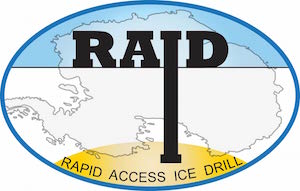Contributed by Martha Sortland
The question we get most often from friends and family back home is, “how do the bathrooms work out there?” It’s actually quite fascinating, if you’re not squeamish!
Let’s start with urine. In Antarctica, you can’t pee wherever you’d like, due to environmental protection laws. We can only pee, or dump our pee, in designated areas, marked with a ‘pee flag.’ The coordinates of the pee flags are logged in a database. In our tents, we have well-marked Nalgenes called ‘pee bottles’ just in case we’re caught in a storm that makes it unsafe to leave our tents…or if we’re too cold and tired to leave our tents in the middle of the night. As a female, I must issue this statement — peeing in a Nalgene takes practice.
In the morning, we dump our pee bottles at the pee flag. This is crucial because you don’t want your full pee bottle to freeze — it becomes difficult to clean, not to mention it’s gross to keep urine in your tent, whether solid or liquid! And we’ve gotta have some standards of hygiene around here!

Urine and human solid waste are processed separately, so our outhouses have two seats inside. The urine seat is over a funnel with a coffee can for easy disposal at the pee flag. The solid waste seat is over a bucket with a plastic bag in it. When you’ve done your business, you simply take the bag out and tie it up, just like you’d do with your dog’s poo at a park. Then you place the bag in a barrel that is taken back to McMurdo via either helicopter or on a three-day tractor traverse.

Once at McMurdo, the barrel is loaded into a refrigerated shipping container, which is then loaded onto a cargo ship that visits once per year. The ship sails from Antarctica to Port Hueneme, California, where the waste is disposed of properly. I wish I could get travel points or airline mileage for our waste’s journey. Can that be a thing?
Keep in mind that the outhouses are not heated. The seats in the outhouse are made of foam so your bum doesn’t have to suffer the cold. In a place that lacks many basic creature comforts, this is a much-appreciated design element. Using the bathroom out here is much more enjoyable than squatting in the middle of the woods on a humid summer day, surrounded by mosquitoes, poison ivy, and probably bears. As long as you follow the rules and keep your pee bottle clean, life isn’t too bad!
Photos by Martha Sortland.
The views expressed here are personal reflections that do not represent either the RAID project or the National Science Foundation.
